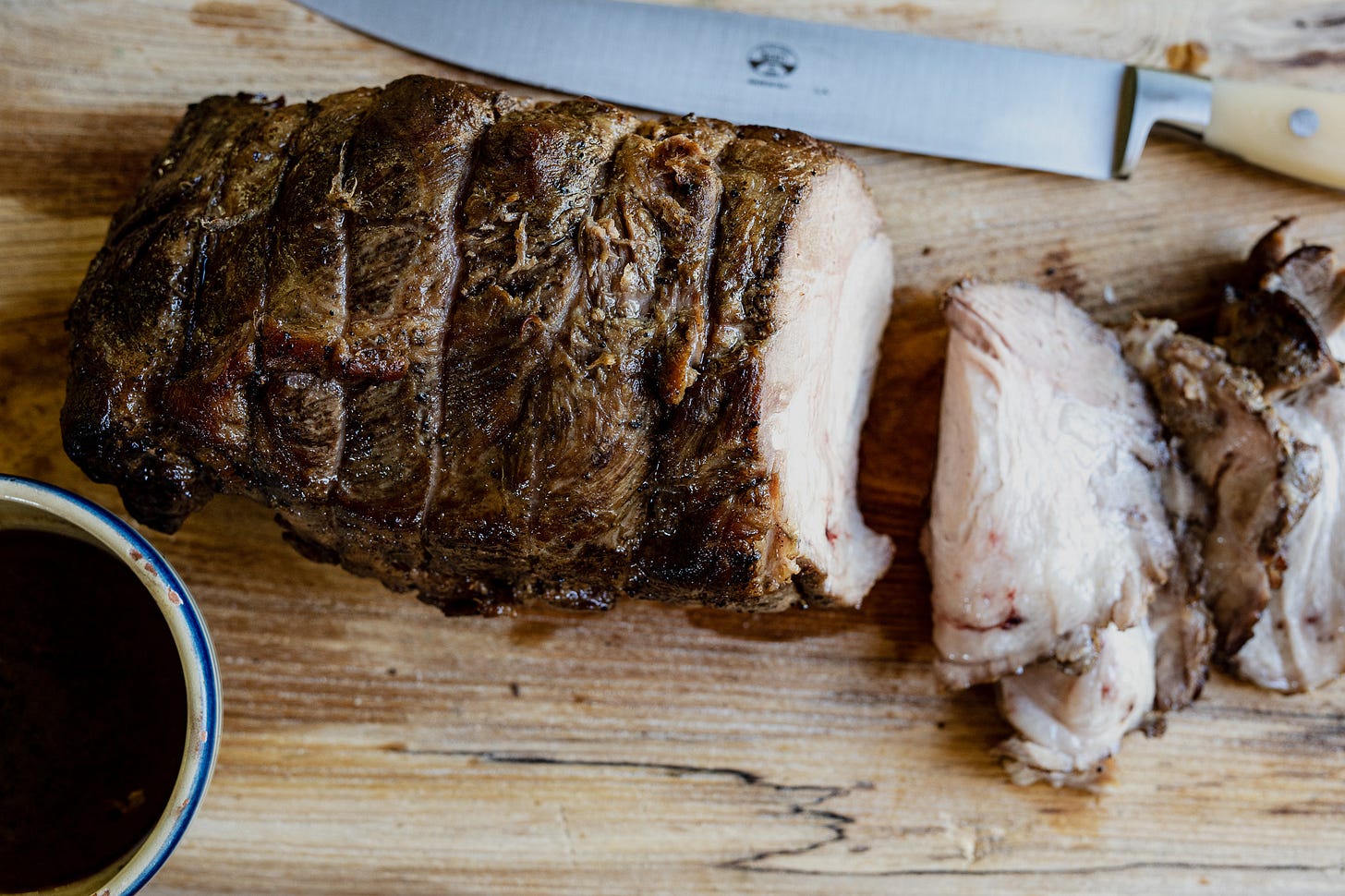What is the “dead roast”?
From time to time, I revisit food and wine books that I have never been able to part with and that never seem to age. One, written by my mentor Richard Olney and entitled Simple French Food, a tome ringing with his particular mellifluous language and ardent passion for French cuisine, never fails to inspire. To Olney, braised dishes embody the heart and soul of traditional French cooking. They “spark something akin to an ancestral or racial memory of farmhouse kitchens—of rustic tables laid by mothers, grandmothers, or old retainers…Les petit plats qui mijotent au coin du feu (The little dishes that simmer on the hearth) is a phrase that is used like a [simple] word and it rarely fails to garnish a conversation about food. It would be unfair to accuse those who use it—albeit at times as a crutch—of leaning on a vain cliché for they know it—or sense it to be a magical formula: the incantational touch-spring that unites a diverse people in a single reaction. It means ‘slow cooking stews,’ but it symbolizes ‘the good life,’ and somewhere, shadow-like, behind its words lies a half-remembered state of voluptuous total well-being.”
The other never relinquished book is my grandmother’s patinated copy of Pellegrino Artusi’s La Scienza in Cucina e L’Arte di Mangiar Bene (Science in the Kitchen and the Art of Eating Well). Self-published in 1891, word spread and the book grew to numerous editions with hundreds of thousands of copies sold. It remains in print today. Artusi was born in the Emiglia Romagna but settled in Florence for the greater part of his life. There he pursued his avid interests in food that extended well beyond the Arno. Artusi was the first to include recipes from the many regions of Italy in a single cookbook and was credited with having codified Italy’s national cuisine. The work is a wordy compendium of 790 recipes, many written in prose form with an appendix dedicated to ”those with weak stomachs”, certainly an uncommon accommodation for any cookbook.
One entry in Artusi’s book, “Arrosto Morto” caught my eye, reminding me of dishes I had eaten during a formative year I spent living and working in and around Florence. The sound of “Arrosto Morto” (“Dead Roast”) doesn’t really make one’s mouth water. But the name is fanciful and was traditionally given to distinguish it from roasts turned on the spit over the dry heat of a live fire. Instead, it is a large cut of meat that lies motionless in a tightly covered pot, an image that may have brought to mind a coffin in its originators.
Characteristic of the ‘dead roast’ other than its size, (outsized, that is, for a braised dish) is that the meat is well browned to give it the appearance and flavor of a roast but is then stewed in its own juices with a minimum of added liquid. The liquid, be it broth, wine, or simply water is there to conduct heat rather than to provide moisture to the meat. As is often wrongly suggested in recipes for braises, meat cannot absorb moisture as it cooks. It has only its own moisture to give up as heat attacks water-bearing muscle fibers, fat melts, and collagen breaks down into gelatin. Water, wine, broth, or other liquid serves to prevent flavorful renderings from the meat and those contributed by any aromatic additions from evaporating on the bottom of the pot. When moisture is present, steam trapped under the lid of the pot also transfers heat to the center of the meat even more efficiently than the hot air of an oven or a live fire.
The meat must never be allowed to boil or overshoot the time necessary to cook it to the point of tenderness. Yet, it should remain intact so that it can be served in slices at the table. The rendering of the meat at the bottom of the pot is its only accompaniment. This rendering which the Italians call sugo aims to deliver the essential flavor of the meat. If aromatic vegetables are included, they are added sparingly so as not to muddle the savor of the sugo. Arrosto morto then is a blended method of cooking, something between braising and roasting and something at the finish like neither entirely.
In Italy, Arrosto Morto is most often prepared for occasions—holidays and the habitual Sunday family meal. It also appears regularly in trattorias and family-run restaurants catering to large gatherings where having the roast laid away in the oven or on the stovetop permits for kitchen time spent on other items on the menu. Italian mothers are famous for their Arrosto Morto cooked stovetop. Echoing home and hearth wherever they are served, these are deeply satisfying with a character that is nothing less than personal.
Cooking Arrosto Morto
So how best to approach the cooking of Arrosto Morto? Brown the meat, add liquid, crank the heat to a simmer, and wait? The process is more nuanced. The first step is to throw away any recipe that advises a general cooking time (e.g., “set the pot to simmer on a low flame for 2-1/2 hours”) or that provides the misguided direction to cook by minutes per pound of meat. Neither address the number of factors that come to bear on what is more than a simple process.
Keep reading with a 7-day free trial
Subscribe to Notice! to keep reading this post and get 7 days of free access to the full post archives.






